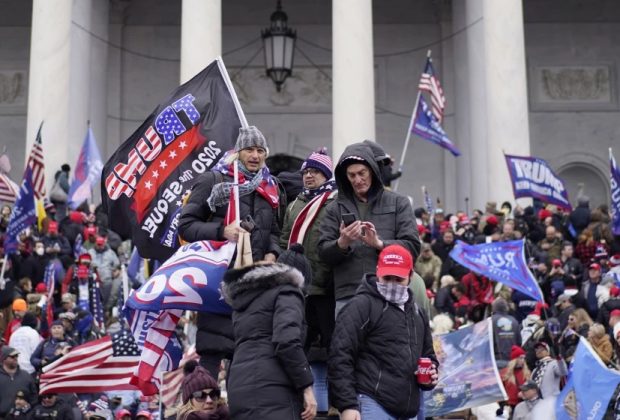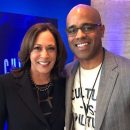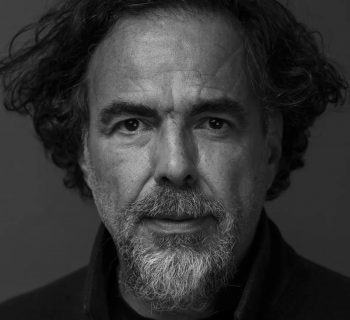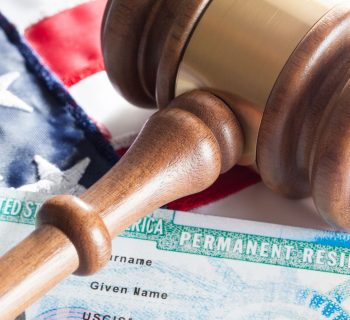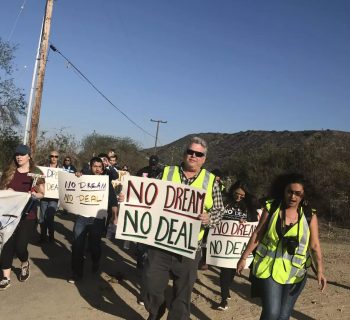One year later: Columnist Jean Guerrero reflects on disturbing data about the traitors of the insurrection.
JAN. 5, 2022 | Photo credit: Kent Nishimura for LATimes
One year ago, a mob of mostly white men stormed the Capitol to try to keep their race-baiting idol in power. The attack was not the “last gasp” of white supremacy or Trumpism, as many might have wanted to believe.
It was a national coming out party for the political right’s insurrectionist movement, whose roots were set decades ago and completely visible in California’s electoral politics and public battles in the 1990s.
These rioters were neither outliers nor rejects within the Republican Party. A University of Chicago report released this week found that the more than 700 insurrectionists criminally charged in the attack were not members of some extreme political fringe. They’re from the mainstream; only 7% were unemployed. Half were business owners or white-collar workers, including doctors, lawyers, accountants. The great majority — nearly 90% — were not part of extremist groups like the Proud Boys or Oath Keepers.
More importantly, the insurrection is a “political movement,” not ordinary criminal activity, though crimes can be involved, the Chicago researchers found. And the key driver of the movement is the white supremacist “Great Replacement” theory, which comes straight out of California politics from the 1990s.
What is new perhaps is how pervasive this ideology has become — along with a broad embrace of violence. The Chicago report found that 21 million Americans believe President Biden is an “illegitimate” president and that “use of force” to restore Trump to office is justified. Let that sink in: 21 million people — more than the combined population of the five most populous U.S. cities — think Trump should forcibly regain power.
The report warns that this movement, with its approval of the use of violence, may well “continue (or grow) with the coming election season and as Trump launches his own social media platform.”
What force could make a vast swath of Americans want to hurt others and end our hallmark peaceful transitions of power? The answer is predictable: About 75% of pro-insurrection adults, according to the study, have the delusion that Democrats are importing “Third World” immigrants to “replace” them.
This racist and largely antisemitic conspiracy theory is not relegated to the dark cellars of 8chan and Telegram. It’s openly promoted by leading conservatives, such as Fox News host Tucker Carlson. And it’s a theory that has violence at its core, inspiring white terrorist massacres.
That’s not a new play for Republican leaders. They opened the Pandora’s box of “replacement” paranoia in California in the 1990s with scaremongering about a decline in the state’s white population and an imagined Mexican “reconquista.” Trump’s senior advisor Stephen Miller, for one, grew up in California during that time.
That nativist craze took many forms, including border vigilantism and unfounded voter fraud claims — precursors to Trump’s Big Lie. During the 1988 elections, uniformed guards were hired by local Republicans to patrol mostly Latino neighborhoods, where some held up signs saying “Non-citizens can’t vote.” In 1990, ousted San Diego Mayor Roger Hedgecock peddled voter fraud hysteria on his talk show.
Harold Ezell, co-author of the notorious Proposition 187 — which sought to deny social services for undocumented people — launched a voter fraud task force and hotline within days of the 1994 election. “The thing that made me start wondering about this,” Ezell said then, “was when I was looking at the opposition to 187. I was watching the vociferous anger against 187 and the hot pursuit . . . to register (people) to vote against 187.” Brown people voting had to mean something was amiss.
Trump’s Big Lie — and its capacity to elicit violence — is inseparable from those biases. Ahead of the 2016 election, Trump falsely claimed there was a big problem of “illegal immigrants” voting, another way of stoking “replacement” psychosis.
And it worked. The people charged in connection with the storming of the Capitol came largely from places experiencing relative declines in white populations (a phenomenon attributable to racially motivated white flight amid demographic change, not a sinister “replacement”). Immigration paranoia was top of mind for many of them, including Ashli Babbitt, a San Diego resident who was shot and killed by police as she broke into the Speaker’s Lobby in the House.
Babbitt, a QAnon adherent, made social media posts and videos echoing right-wing propaganda about immigration. In one video, she was upset because she lived near the border: “This immigration thing, I guess I’m taking it so personally is because I am here and you see the effects, you see the crime, you see the drugs … you see the rapes, you see all of the gangs.”
In reality, San Diego is one of the safest big cities in the country.
California has in recent decades seen an increase in Latino political participation. About a million new Latino voter registrations in the 1990s were facilitated by changes in immigration law. Who was the proponent of this sweeping effort to “replace” whites with an influx of “Third World” immigrants? Ronald Reagan, with his 1986 immigration reform plan.
The Republican Party, being captive to “replacement theory” derangement, seems to have given up on courting Latino voters. This has led to the only place it could go: efforts to reverse electoral defeats with denial and violence that pose the true apocalyptic threat to American democracy.

